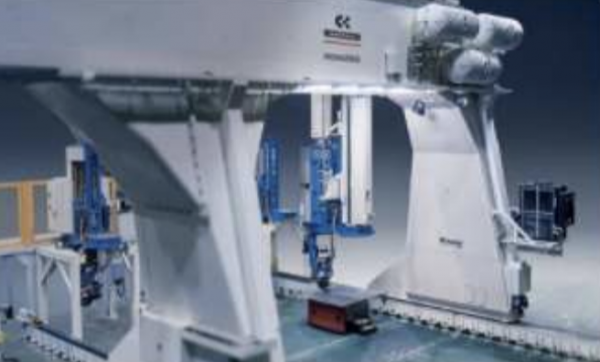AEM Calls for National Manufacturing Strategy

The Association of Equipment Manufacturers has called on the federal government to develop and implement a comprehensive national strategy for manufacturing to strengthen the economy, create new jobs and opportunities, and ensure that the U.S. is the best place in the world for equipment manufacturers to innovate, manufacture, and do business, the association announced April 6.
In a statement, AEM president Dennis Slater said, “The federal government should take strong and immediate action to support equipment manufacturers, protect the 2.8 million jobs that they support, and guarantee the viability of an industry that is essential to the economic and national security of our country as well as our way of life… Between rising manufacturing costs and the industry’s growing skills gap, not to mention the devastating impact of the COVID-19 pandemic on communities across the country, it is imperative that our elected officials mobilize the full force of the federal government in support of the country’s manufacturing sector.”
To confront both the short-term and the long-term challenges facing the equipment manufacturing industry, AEM is urging the U.S. Congress and the Trump administration to develop and carry out a national strategy to revitalize America’s manufacturing sector and ensure that the country remains the global manufacturing superpower.
Specifically, AEM is urging the federal government to consider the following:
The creation of a national institute that would serve as a hub for all federal manufacturing programs in the executive branch and coordinate federal manufacturing policy across agencies; the establishment of a chief manufacturing officer reporting directly to the president of the United States who is responsible for developing and carrying out the national manufacturing strategy; and the formation of a national manufacturing council to provide nonpartisan advice to the president on how to strengthen the manufacturing sector and ensure the future competitiveness of U.S. manufacturing in the global economy.
There are currently 58 manufacturing-related programs across nearly a dozen federal agencies, which makes it needlessly difficult and expensive to carry out their missions and impossible to estimate total federal investment in manufacturing. A coordinated national effort, including the new national institute, along with a chief manufacturing officer and a national manufacturing council, would significantly raise the profile of manufacturing in the federal government, increase efficiencies and collaboration across existing federal manufacturing programs, reduce wasteful spending, and improve the ability and accountability of the federal government to respond to rapid changes in the global manufacturing landscape.
Jeff Reed, AEM board of directors chair and president and CEO of Reed International, commented on the need to improve and streamline federal manufacturing programs. “It is imperative that our elected officials recognize that a strong equipment manufacturing industry is key to the future prosperity and long-term competitiveness of the United States. A comprehensive national strategy for manufacturing would not only eliminate redundancies and improve efficiencies across the federal government, but would focus all efforts on one single objective: the future of manufacturing in this country.”
A legislative proposal by U.S. Sen. Gary Peters (D-Mich.) would achieve the objectives of the proposed national strategy for manufacturing, and AEM is working with Peters to ensure the legislation uses current program funding and personnel to dramatically improve efficiencies and reduce redundancies in existing federal manufacturing programs, reduces onerous and ineffective regulations, and attracts broad bipartisan support.
AEM is encouraging other trade associations and business groups to join them in working with the federal government to develop and implement a comprehensive national strategy for manufacturing. The initial recommendations by AEM are meant to be a starting point for a broader dialogue about how to ensure the country’s global leadership in manufacturing and guarantee the long-term economic and national security of the United States.






